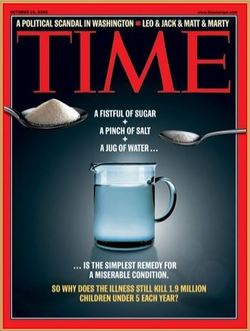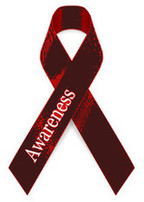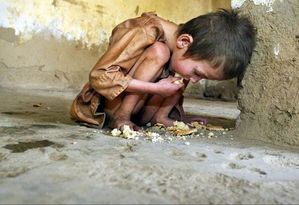The brown ribbon
The ribbon is a symbol of awareness. The color is indicative of the object of awareness.
The brown ribbon is a symbol expressing awareness in the gift giving process.
"To give money is an easy matter and in any man's power. But to decide to whom to give and how large and when, and for what purpose and how, is neither in every man's power nor an easy matter." Aristotle.
The ribbon is a symbol of awareness. The color is indicative of the object of awareness.
The brown ribbon is a symbol expressing awareness in the gift giving process.
"To give money is an easy matter and in any man's power. But to decide to whom to give and how large and when, and for what purpose and how, is neither in every man's power nor an easy matter." Aristotle.
|
P.J. O'Rourke has stated: "Diarrhea kills 2,866,000 people a year worldwide, 2,474,000 of them children under the age of five. This is ten times the number of people who die from AIDS. But no one is wearing a brown ribbon on his tuxedo lapel at the Academy Awards or marching up the Mall in Washington carrying a sign reading DIARRHEA -- IT CAN BE CONTAINED.": P.J. O'Rourke - All the Trouble in the World (1994) |
|
ARK AID has adopted the brown ribben as a symbol of how awareness in the gift giving process can multiply the effects of a donation. A life can be saved with less that 10 cents. The awareness that with very little (read the Time article) much can be achieved, as aposed to giving to lesser goals and inefficient charities, has led us to adopt the symbolic brown ribbon to express this. Saving many is to be preferred to saving few. This despite the jewish wisdom that states "saving one is saving the world".
|

A Simple Solution (Cover Story) In the West, it's an inconvenience, but, in the developing world, it can be a death sentence. It kills millions of children every year, yet the treatment is a simple mixture of salt, sugar and water. So why isn't more being done to fight diarrhea?
Read the article
Read the article
"Diarrhea is the world’s most effective weapon of mass destruction."
Children with diarrhoea are at risk of dying due to dehydration, and early and appropriate fluid replacement is a main intervention to prevent death. Yet few children with diarrhoea in developing countries receive appropriate treatment with oral rehydration therapy and continued feeding (39 per cent).
Even fewer receive solutions made of oral rehydration salts (ORS) alone (one-third), and the past decade has seen no real progress in improving coverage across developing countries.
Moreover, the poorest children in the poorest countries are least likely to use ORS, and zinc treatment remains largely unavailable in high-mortality countries. The stagnant low ORS coverage over the past decade indicates a widespread failure to deliver one of the most cost-effective and life-saving child survival interventions and underscores the urgent need to refocus attention and funding on diarrhoea control."
Source: UNICEF - Pneumonia and diarrhoea: Tackling the deadliest diseases for the world’s poorest children
see: rehydration project



